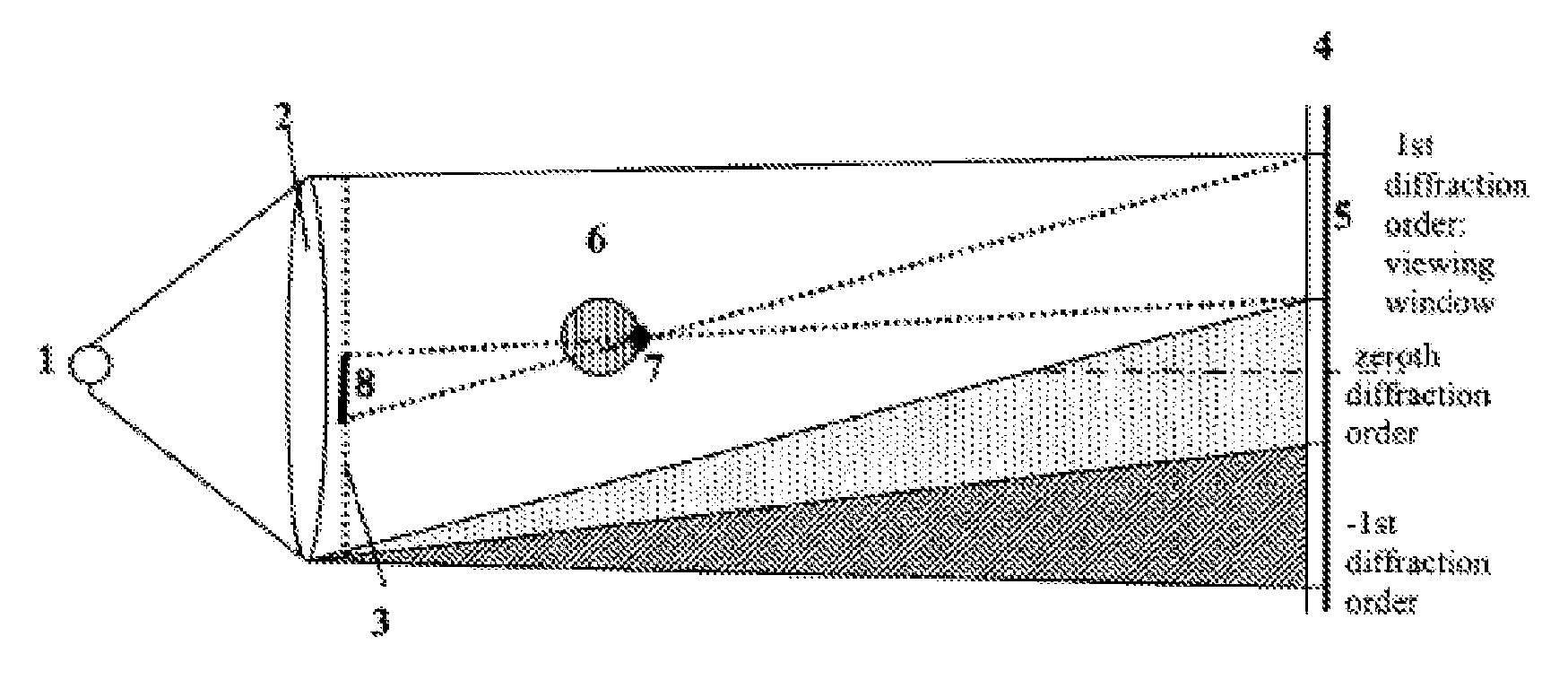Video hologram and device for reconstructing video holograms for large objects
a video hologram and large object technology, applied in the field of video hologram and video hologram and a video hologram device for reconstructing video holograms, can solve the problems of voluminous and heavy elements, limited range of applications, and gradual limitation of the usable extent of reconstruction, and achieve the effect of large viewing angles
- Summary
- Abstract
- Description
- Claims
- Application Information
AI Technical Summary
Benefits of technology
Problems solved by technology
Method used
Image
Examples
Embodiment Construction
[0030]A device for reconstructing video holograms comprises the hologram-bearing medium, a sufficiently coherent, real or virtual, point or line light source and an optical system. The video hologram-bearing medium itself consists of cells which are arranged in a matrix or in an otherwise regular pattern with at least one opening per cell, the phase or amplitude of said opening being controllable. The optical system for reconstructing the video hologram can be realized by an optical imaging system known in the art, consisting of a point or line laser or a sufficiently coherent light source.
[0031]FIG. 1 shows the general arrangement of a video hologram and its reconstruction. A light source 1, a lens 2, a hologram-bearing medium 3 and a viewing plane 4 are arranged one after another, seen in the direction of the propagating light. The viewing plane 4 corresponds with the Fourier plane of the inverse transform of the video hologram with the diffraction orders.
[0032]The light source 1 ...
PUM
 Login to View More
Login to View More Abstract
Description
Claims
Application Information
 Login to View More
Login to View More - R&D
- Intellectual Property
- Life Sciences
- Materials
- Tech Scout
- Unparalleled Data Quality
- Higher Quality Content
- 60% Fewer Hallucinations
Browse by: Latest US Patents, China's latest patents, Technical Efficacy Thesaurus, Application Domain, Technology Topic, Popular Technical Reports.
© 2025 PatSnap. All rights reserved.Legal|Privacy policy|Modern Slavery Act Transparency Statement|Sitemap|About US| Contact US: help@patsnap.com



